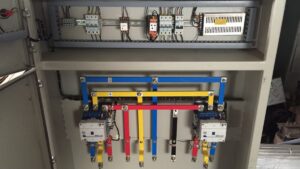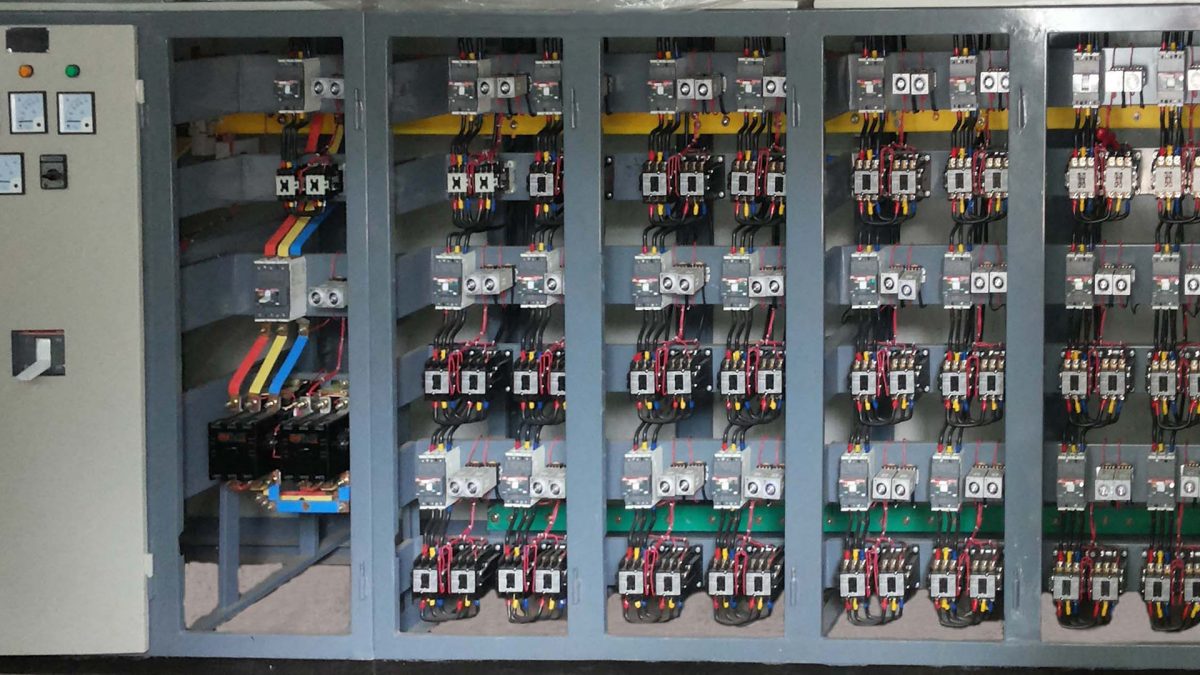

Automatic Transfer Switch (ATS) depends on the type of switch and its position in the critical power infrastructure. Losing power during a natural or human-made disaster due to incorrect sensing or time-delay function. Or, the result of a maladjusted ATS panel. A large percentage of automatic transfer switch failures are attributed to preventive maintenance.
The transfer switches and parallel gear are the brains of the EPSS. And while no frequency interval for maintenance is specified. It is strongly recommended that scheduled comprehensive reviews are performed by a qualified technician quarterly with internal maintenance performed once a year.
Commercial building’s ATS configuration transfers power between a primary electric utility source and a secondary standby-emergency generator electrical source. In this configuration, primary electricity flows through the “normal power” feed within the ATS. Upon a loss of primary (normal) power, the ATS sends a “start signal” to the standby generator. After the standby generator starts and is providing a stable electrical power source (estimated 15-30 seconds), the ATS transfers the electrical load from the primary power source to the standby generator. With the ATS arrangement outlined above, electrical power can be distributed, to critical systems and equipment, e.g., life safety and fire systems, during a loss of power.
This standard ATS configuration results in a short delay, in electric power availability, until the emergency generator auto-starts and the
ATS switch transfers power through the “emergency generator feed”. There are many variations of ATS electrical power applications, particularly in “business-critical environments”, such as data centers and critical health care facilities. In these types of environments, the use of Uninterruptable Power Systems (UPS) and “make before break” ATS configurations ensure continuous electrical power, to critical systems and equipment, at all times.
Upon sensing the loss of normal power, the ATS logic signals the emergency power supply system (EPSS) to start. When the emergency source of power is available, and critical parameters such as voltage and frequency are within the proper range, the ats panel service in Pakistan paralleling switchgear will transfer to emergency power.
These steps are reversed upon the return of the normal power source. The ATS/switchgear logic will again verify the normal power is within the desired parameters and stable before retransfer. Once the ATS/switchgear returns to the normal position, the ATS/switchgear logic dictates a cool-down period for the EPSS generator(s).
Proper maintenance of all components of the emergency power supply system (EPSS) is essential and directly linked to the integrity of the critical power system. As it relates to NFPA 99 and 110; this system is only called upon to function in an emergency. Of course, this is the worst time for a malfunction of any one element. The total aspect of maintenance extends far beyond the routine tasks recommended to properly maintain any single element. Maintenance programs must be carefully reviewed, and maintenance provider selection is just as important as any other aspect of the EPSS.
The total aspect of maintenance extends far beyond the routine operational testing performed by facility engineers. The example of the annual ATS maintenance illustrates the requirement of these procedures to be carried out by a dedicated, trained professional.
Surface comparison of maintenance proposals by competing vendors may be misleading. An aggressive maintenance company may state they can do everything that is required.
Curabitur ac leo nunc vestibulum.
Premier Engineering & Services, better known as, PES, flaunts an ISO certified status with various other local and international certifications in its arsenal. Our company traces its roots back to 2016, spearheaded by a team of professionals eager to serve the Energy Sector of Pakistan through exceptional solutions.



Premier Engineering & Services ,
8, Civic Centre Mustafa Town, Lahore, Pakistan
NTN # 7282071-0 | STRN # 32-77-8761-312-71 | D&B D-U-N-S: 645829040

Our company “Premier Engineering & Services” is committed to fulfill both statutory and regulatory requirements and quality requirements of customer. To meet this obligation, the company will continue reviewing the system for its continued suitability of the quality management system. The policy will be communicated, implemented and maintained at all levels of the organization. Appropriate resources of the company will be directed towards achieving the quality goals through employee’s participation.

Our company “Premier Engineering & Services” is committed to fulfill both statutory and regulatory requirements and quality requirements of customer. To meet this obligation, the company will continue reviewing the system for its continued suitability of the quality management system. The policy will be communicated, implemented and maintained at all levels of the organization. Appropriate resources of the company will be directed towards achieving the quality goals through employee’s participation.